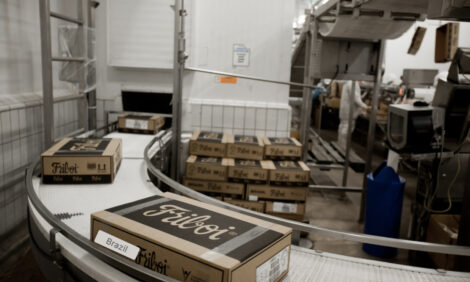



Are US and EU Heading for Trade War over Ractopamine?
GLOBAL - The EU and US could be heading for another trade war, similar to the one it had over the use of growth hormones in beef cattle, writes Chris Harris.This time the row that is brewing is over the use of ractopamine - a beta agonist - as a feed supplement, which is used for boosting growth and increasing leanness in pigs, cattle and turkeys.
The latest turn of events in this saga came this week, when the Council of the European Union published its official response to the decision by Codex Alimentarius to set maximum residue limits for ractopamine, thus endorsing its use.
The decision by Codex was taken after a majority vote by the member nations. The majority was two.
The anger from the European Union at the Codex decision and the response by the council puts the EU on a collision course with countries such as the US and Canada, where the use of ractopamine is widespread. Some estimates have the use in pig feed of between 60 and 80 per cent of the US herd.
The European Union has stuck to its policy of refusing access to meat from animals that have been treated with ractopamine and has called for assurances that any meat entering the EU from countries where its use is common has come from animals that are free from the drug.
A similar stance to this over the use of hormones in beef production led to years of dispute within the World Trade Organisation and a series of severely restrictive and costly retaliatory measures from the US and Canada in particular.
While the EU still bans imports of meat from animals that have been reared using one of the six banned hormone growth promoters - estradiol, progesterone, testosterone, melengesterol acetate, trenbolone acetate, and zeranol - in March this year an agreement was reached to go a long way to settle the dispute.
The EU made concessions raising the quotas of quality non-hormone treated beef imported from the US and Canada to 48,000 tonnes and in response the US and Canada suspended the duties imposed blacklisted products from 26 EU states - all except the UK - that were worth $250 million.
The new import quotas came into effect in August.
All this could again be thrown into the melting pot, as the EU places another ban on imports that the US and Canada will see as breaking the WTO agreements on Sanitary and Phytosanitary Measures and the Agreement on Technical Trade Barriers.
The EU is annoyed that a small majority in Codex forced the measure through when it believe the decision should have been made through consensus.
And it insists that its decision to ban products from animals that have been fed ractopamine is based on "persisting scientific uncertainty about the safety" of such products. This, the EU says, is based on a European Food Safety Authority opinion of 2009.
The EU stance is also supported by China, where the import of products for animals treated with ractopamine is also banned.
However, there is also a divergence between the maximum residue levels that have been set down by Codex Alimentarius and the US. Codex has set the levels at 10 parts per billion for muscle cuts of beef and pork. The US Food and Drug Administration sets the levels at 30 parts per billion for beef and 50 parts per billion for pork.
In the US, ractopamine is allowed to be fed at concentrations of 5-20mg/kg of feed for finishing pigs and in dosages of 5-10mg/kg feed for finishing pigs heavier than 109kg.
However, despite assurances from the US and the regulatory authorities in other meat exporting countries, that products from animals fed ractopamine are safe, the EU's position seems entrenched.
The more the two sides dig in, the greater the divergence and hostility will emerge - and all this occurred at a time when the US meat companies were in Paris at one of the largest European food shows, marketing their products that had just been allowed onto the EU market in greater amounts following the compromise in the beef hormone dispute.









